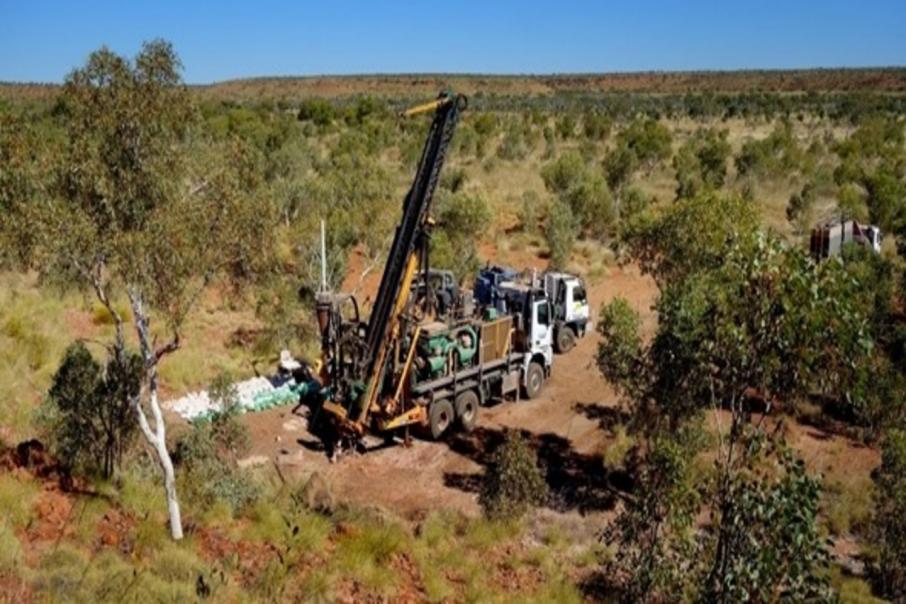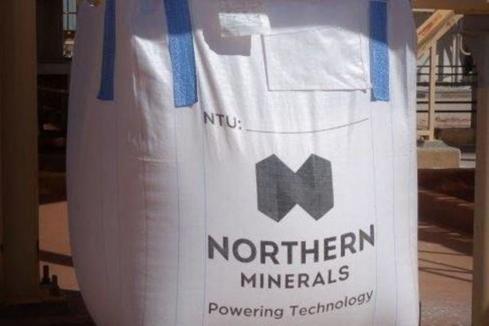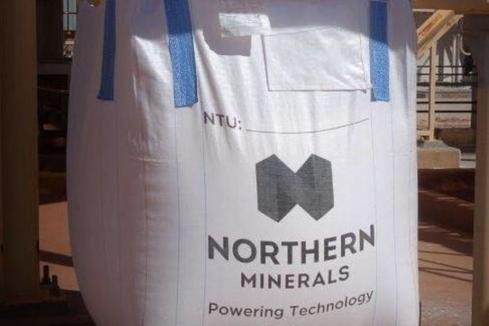ASX-listed heavy rare earths player Northern Minerals has its sights trained on a new set of prospects at its flagship Browns Range project in WA’s East Kimberley region. The trio of targets were highlighted by preliminary field portable X-ray fluorescence hits the company says point to broad geochemical anomalies that it intends following up with more drilling shortly.


ASX-listed heavy rare earths player Northern Minerals has its sights trained on a new set of prospects at its flagship Browns Range project in WA’s East Kimberley region. The trio of targets were highlighted by preliminary field portable X-ray fluorescence hits the company says point to broad geochemical anomalies that it intends following up with more drilling shortly.
As part of its $10 million exploration campaign this financial year, the Perth-based company’s recently completed reverse circulation drilling program probed the Banshee prospect and a south-east trending corridor from the Dazzler to Quicksilver prospects. It totalled 120 holes for an aggregate drilling coverage of 8,700 metres.
The drilling led to “highly anomalous” portable or handheld X-ray fluorescence analyser or “XRF” measurements of the highly crystalline rare earth, yttrium across relatively wide zones at the Cyclops, Rockslider and Banshee prospects, especially at Banshee South and Rockslider.
All three are all located less than 15 kilometres from the Browns Range pilot processing plant.
Latest significant preliminary field portable XRF readings indicate the Banshee prospect is more extensive than originally thought, Northern Minerals says.
The Banshee, Banshee West and Banshee South prospects are interpreted to all be part of a much broader mineralised heavy rare earth elements system.
An infill RC drill program has been planned to vector in on the areas between each of the prospect locations with a view to estimating an inferred mineral resource for the combined Banshee prospects.
Northern Minerals says it has been using its currently adopted method of field portable XRF successfully at Browns Range for the past seven years.
The company explains the technique enables a reliable indicator of final total rare earth oxides or “TREO” values to be generated at the drill rig. It uses historical correlations established between portable XRF analyser readings of yttrium and paired assay data for TREO.
Data going back to 2014 suggests final assayed yttrium and TREO strongly correlate to portable XRF yttrium field analysis of RC drill samples at Browns Range, according to Northern Minerals.
Northern Minerals Chief Executive Officer Mark Tory said: “The field portable XRF results are highly encouraging, and we eagerly await confirmatory TREO assay results. The Browns Range Dome is an amazingly rich, resource filled area that holds the key to Northern Minerals’ current and future growth.”
“Our overall strategy remains to increase the mineral resource and life of mine potential at Browns Range to more than 10 years. This will feed into our feasibility study for a potential commercial-scale heavy rare earth operation at Browns Range.”
Follow-up drilling consisting of about 8,000m RC and some diamond holes is either under way or imminent.
Northern Minerals produces the heavy rare earth element dysprosium at its $75 million Browns Range pilot plant operation.
It is one of the few producers of dysprosium outside of the world’s dominant supplier China, which speak for about 98 per cent of heavy rare earths production globally.
The $213 million market-capped heavy rare earths hopeful kicked off production at the trial plant almost three years ago as part of an evaluation of the economic and technical viability of scaling up to a larger-scale development.
An ore sorter, which was installed and commissioned this year, will also be put through its paces at the front end of the pilot plant.
Demand for heavy rare earth elements, in particular dysprosium and terbium, continues to be driven by strong growth in the high-performance dysprosium neodymium-iron-boron magnet sector.
Applications for the permanent magnets include in the renewable energy, transport electrification, military and high-tech industries.
The latest published mineral resource statement for Browns Range tips the scales at 9.24 million tonnes grading an average 0.67 per cent TREO for about 61.9 million kilograms of contained TREO across seven deposits.
Within the overall resource figures sit probable ore reserves of 3.29 million tonnes weighing in at 1.94 million kilograms of dysprosium and 22.3 million kilograms of TREO.
Northern Minerals says it is looking to finalise a feasibility study on the potential development of a full-scale beneficiation plant at Browns Range around the middle of next year.
Is your ASX-listed company doing something interesting? Contact: matt.birney@businessnews.com.au













